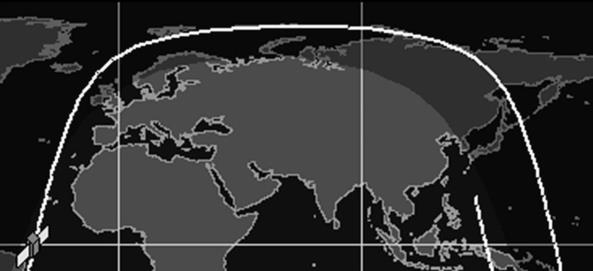
NavList:
A Community Devoted to the Preservation and Practice of Celestial Navigation and Other Methods of Traditional Wayfinding
From: Frank Reed
Date: 2023 Sep 5, 04:48 -0700
Robin Stuart, you wrote:
"This is a tricky one and it stumps Astrometry.net."
That's intriguing. I wonder why? Would it perform better with a small patch of the image? It's possible that it's confused by the projection, which, if I have understood it correctly, is not especially exotic, but if astrometry.net handles projections as differential adjustments (as a traditional astrometric analysis of a single photographic "plate" might do), then this huge field of view could break its matching algorithm.
So what's the projection? When I first saw the image, it reminded me of certain wide-field Milky Way images. One of the brightest auroral bands in the image starts near the horizon on the left, climbs upward at an angle greater than 60° from horizontal, then levels off to an almost "square" top, partially out of frame, and then drops back to the horizon at almost the same steep angle on the right. It's like an inverted 'keystone' shape. This, to me, suggests that the photo was taken (or rendered) with an "all-sky" or full-hemisphere camera and then displayed more or less without projection (from the camera's raw data perhaps). That implies that the pixels in the image are basically altitude versus azimuth in a simple x-y or "equirectangular" plot. That would produce the inverted 'keystone' shape that we see from a great circle arc running straight across the sky from horizon to horizon. See two images below for similar shapes in related plots.
You also wrote:
"An obvious feature in the image is the Large Magellanic Cloud (LMC) near the top of the frame to the right. It's orientation can be judged by the location of the Tarantula Nebula below at its right hand end. That makes Achernar the star just to the left of centre above the central patch of auroral glow."
Yes! And did you notice there's a little tail of the SMC right at the top of the frame, above Achernar? I've checked nearby stars, and it's a match.
And you added:
"The star below the LMC is Canopus and below that near the horizon is Sirius with Rigel below that to its left. From Sirius the path of the Milky Way can be seen running up to the rich η Carinæ region at the centre right edge of the frame."
Yes. The 'sword' of Orion is also evident. It seems like the stars of Orion's Belt might be just barely in frame, but they're lost in the aurora glow or maybe just extinction near the horizon. I took another look at the Milky Way star clouds following your comment here, and it's remarkable how visible they are even with so much distraction. It's the filamentary dark nebulae that give it away, I think. Even viewed at full wide field, there are clear, meandering channels in the star field that imply "Milky Way dust clouds".
The field of view of the image there on the right, past the Milky Way star clouds, appears to extend even to Miaplacidus. Once I found a system I was able to track down quite a few familiar stars. As I mentioned in my post to David McN, I found Diphda (tough but I'm sure of it), and Arneb in Lepus conveniently has almost the same declination. That's two stars with measurable altitudes ("measurable" in principle), and they are separated by over 60° in azimuth. That should be nearly ideal for a fix. What's the most efficient way to work out the latitude of the fix?
In addition to the two 'keystone' shape examples, I'm including a Stellarium-generated image that I think matches the original photo fairly well and highlights the navigational stars that should be identifiable, as well as the star Arneb.
Frank Reed









